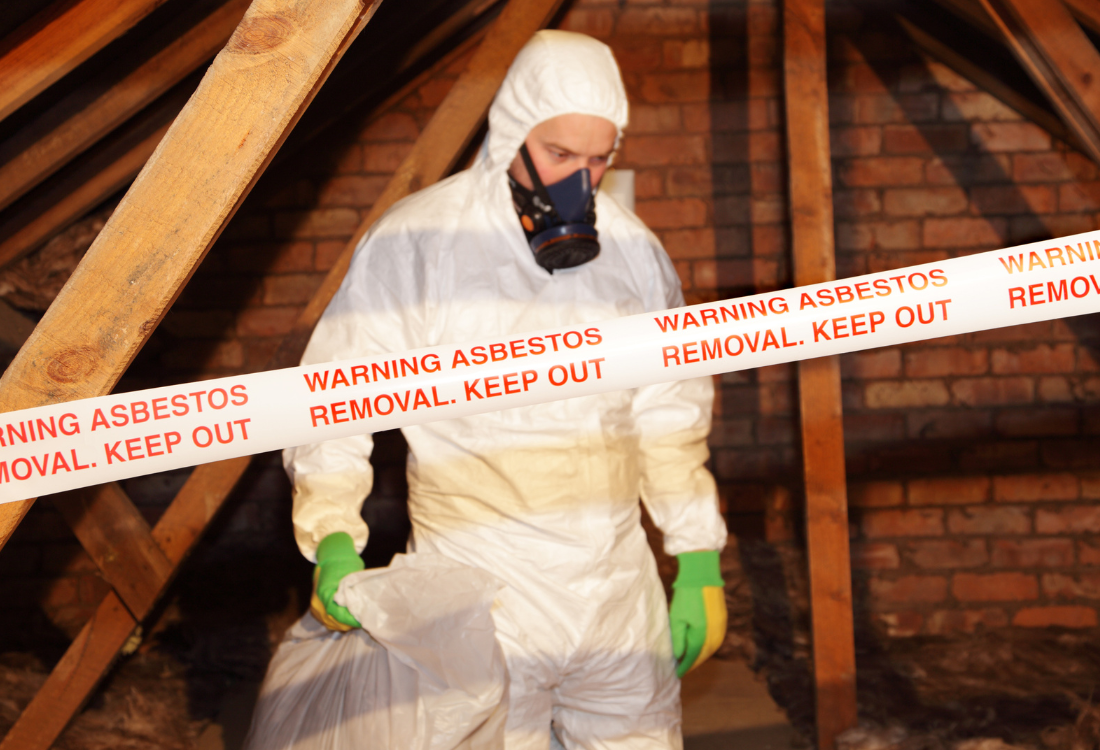
Asbestos: Managing the Risk for Contractors and Customers
At SC4 Carpenters, we take the risks posed by asbestos seriously. In this article, we’ll explain why asbestos poses a danger, who is most likely to be affected, and what steps should be taken to ensure the safety of your workforce and customers.
Asbestos: The Hidden Danger
It is estimated that approximately 300,000 commercial and public buildings in the UK contain asbestos and the Government has recently set a 40-year deadline for the substance to be removed. While asbestos that remains undisturbed in situ – for example within existing walls or floors – poses a minimal risk to occupants, the renovation, refurbishment, or demolition of older buildings could result in the release of asbestos particles into the air which can be inhaled by anyone in the vicinity.
In the UK, approximately 5,000 people die each year due to asbestos-related diseases, making exposure to the mineral the leading cause of work-related deaths. Illnesses caused by asbestos can take decades to exhibit symptoms and, by the time they are diagnosed, are frequently incurable.
Asbestos fibres are invisible to the naked eye, have no odour, and cannot be felt, making it impossible - without proper testing - to detect their presence in the air or on clothing. The dangerous nature of asbestos underlines the importance of exercising extreme caution when dealing with materials that may contain it.
Who Is Most At Risk Of Asbestos-Related Disease?
Certain trades have a higher likelihood of accidental exposure to asbestos, so comprehensive training is essential to safeguard workers’ health. High-risk activities include maintenance, repair, refurbishment, and demolition.
The risks of asbestos-related ill-health escalates if:
- The building was constructed between 1930 and 1999.
- Work areas haven't been professionally inspected.
- Accurate information wasn't provided by the building’s owners.
- Staff have not received asbestos training.
- Safety protocols are disregarded to save time and money.
Exercising caution and following proper precautions are crucial to minimising the dangers of asbestos exposure.
Our Safety Protocols To Protect Staff And Customers
So, what steps should you take to minimise the risks of asbestos contact?
- Asbestos surveys and inspections: Ensure that buildings are comprehensively assessed and inspected to determine the presence and location of any asbestos-containing materials (ACMs) before work commences.
- Asbestos management plan: Where ACMs are identified, develop and implement a detailed asbestos management plan that outlines procedures for safely managing the risks.
- Asbestos awareness and training: Provide asbestos awareness training for all staff who may encounter ACMs during their work, ensuring they understand the risks and proper handling procedures.
- Protective equipment and containment measures: Ensure that staff have access to appropriate personal protective equipment (PPE) and implementing containment measures during any works that may disturb in situ asbestos.
- Safe removal and disposal: Engage licensed asbestos contractors to ensure asbestos is safely removed and disposed of, observing all relevant regulations to minimise the risk of exposure.
Stay Safe
If you’re planning refurbishment work in your building and are concerned about the presence of asbestos, ensure that you talk to an asbestos specialist before starting any works.
Click on the categories below to find out more about:

Connect with Us
Share this Page
More Posts
Recent Posts
- Breathe Easy, Work Safe: The RPE Every Site Worker Needs
- From Site to Strategy: Simon Mead Promoted to Associate Director at SC4
- SC4 named Cala Contractor of the Month, October 2025
- Why is Neurodiversity so important in Construction?
- Our Favourite Carpentry Project Of 2024: Cromwell Court, Old Basing
- Case Study: Timber Frame Installation in Netley Grange, Southampton
.png?updated=1624008061857)